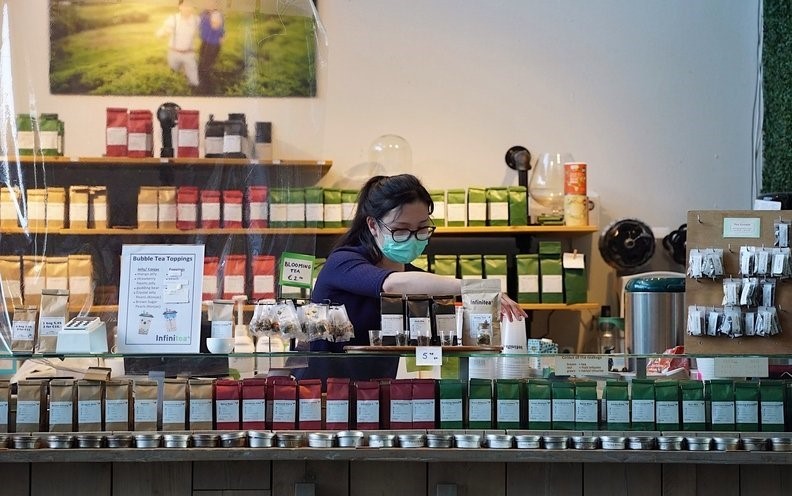
The omicron surge, even as it appears to be receding, exposed an uncomfortable pandemic-era truth for small-business owners: They're particularly vulnerable to economic disruptions like the one we collectively experienced over the past two years.
A new survey finds that at the end of last year, as omicron was just creeping into the American population, some 43% of small-business owners in the U.S. said that they had made a “full recovery.”
Then early this month, with workers getting sick again and the future outlook turning cloudy, just 30% of business owners were reporting confidence in their recovery, though the share in Illinois was even lower, at 28%.
“That drop tells you that the economy for private companies is still very tenuous,” says Eric Groves, CEO of Alignable, a Boston-based firm connecting small companies online, which released its latest survey results. “Many companies are telling us they are still in a ‘staying afloat’ mode.”
Alignable counts seven million business owners aboard its platform. Since COVID-19 first hit in March 2020, Alignable, which was founded 10 years ago, has been quizzing business owners every month on their progress throughout the pandemic. It gets as many as 10,000 responses in some months, and almost always more than 5,000 at the minimum.
The latest survey, concluded Feb. 2, found that 60% of small employers around the country still can’t find enough workers, though in Illinois, the total is 55% (it’s 65% in California). The survey revealed a great disparity in the worker shortage, with 92% of assisted living/senior care facilities unable to find enough workers. For manufacturers, it was 76%; for construction, 69%; and for restaurants, 66%, according to Alignable.
The latest poll found that just 14% of restaurants now say they’ve fully recovered to pre-pandemic levels. That’s down from 32% in December. Retailers are suffering a similar downturn. During the height of the Christmas selling season, 41% of merchants said they had recovered to pre-COVID levels. Earlier this month, that ratio had tumbled to 28%.
Groves says that the top concerns of small companies have shifted continually throughout the pandemic. “At the beginning, it was very much about businesses having enough financial resources to get through COVID,” he says. “Government funding helped many companies get past that concern. It wasn’t until the fourth quarter of 2020 that business owners started talking about their supply chains and inflation.”
In fact, inflation has recently emerged as the top issue in Alignable polling. In May 2020, less than 5% of respondents said inflation was a concern. Currently, that ratio is above 30%. Nearly one-third of companies say that their costs are up by 25% or more from a year ago. But nearly half of respondents said they hadn’t increased their own prices yet.
“The cost of labor is up along with the cost of supplies,” Groves says. “But the vast majority of small companies can’t pass the full impact of these higher costs to their customers. That means that many continue to operate on reduced margins. They aren’t yet at the stage where they can reinvest profits back into their business operations and get healthy again.”
One-third of companies report that operating revenues have returned to pre-COVID levels. Some 20% say revenues are running at less than 25% of pre-COVID levels. Further, 28% of companies say they have enough cash on hand to sustain their business for just the next month. Some 14% say they are out of cash altogether.
How and when will the pandemic end for small business? Nearly one-third of business owners said they don’t think their revenues will return to pre-pandemic levels for at least another year, if ever.
Source: https://www.chicagobusiness.com/private-intelligence/small-business-particularly-vulnerable-economic-disruptions

